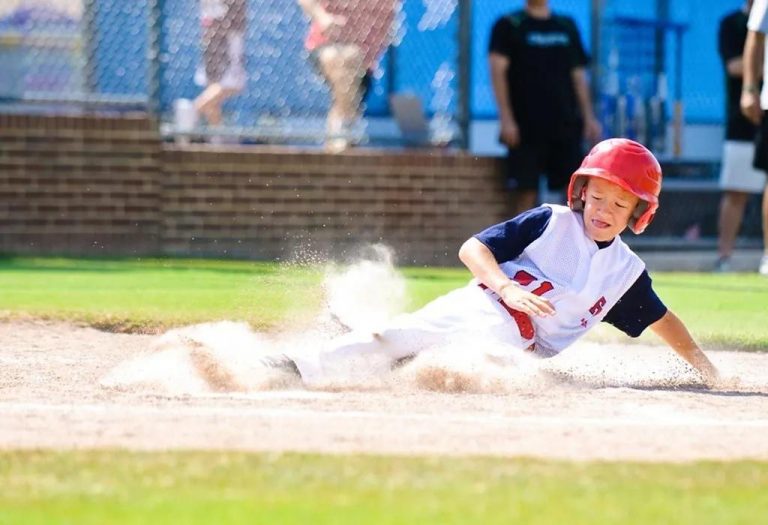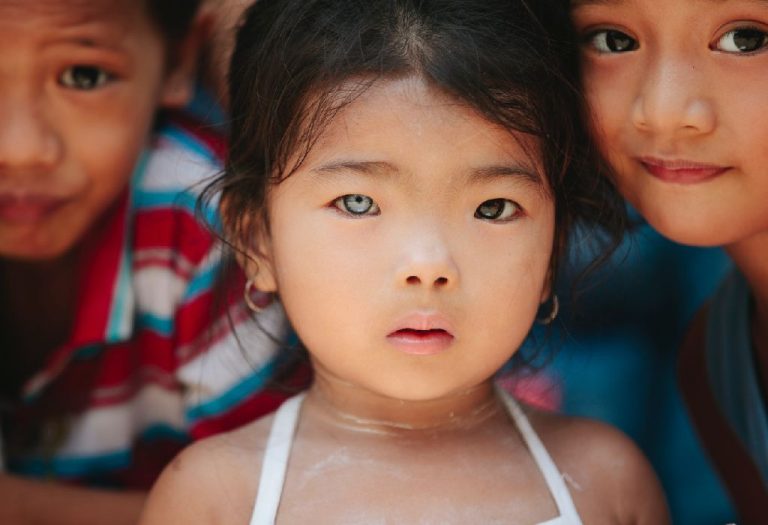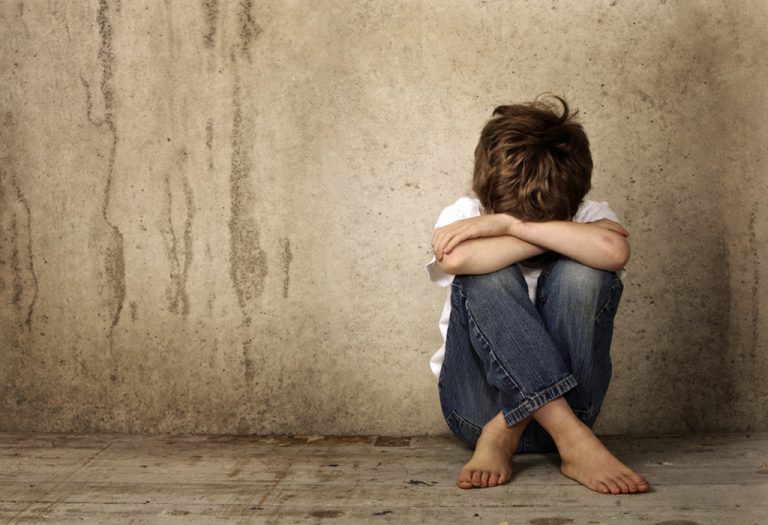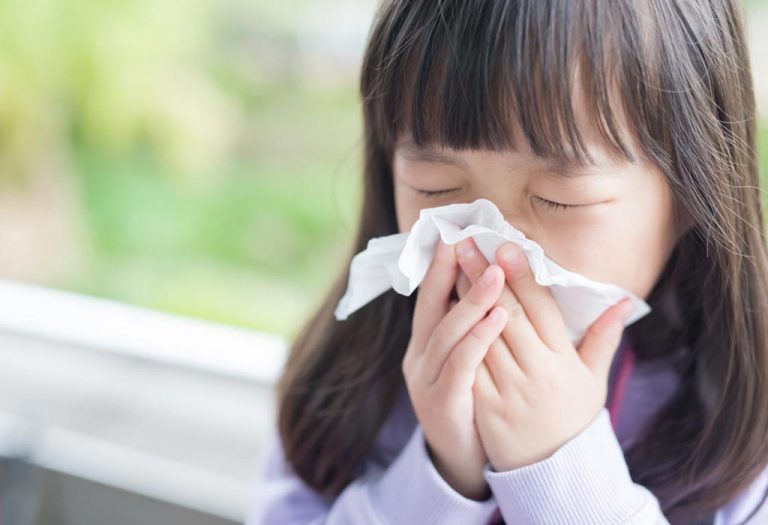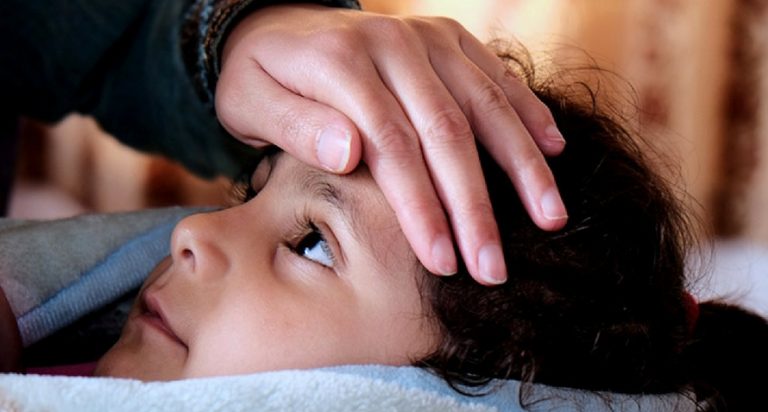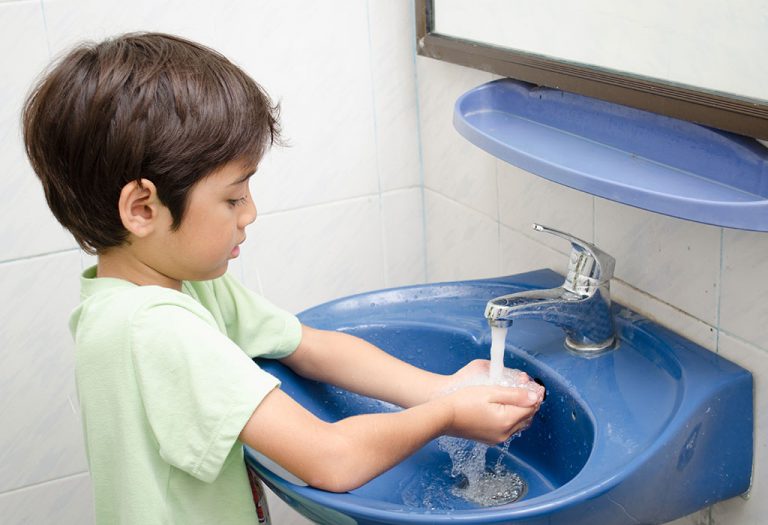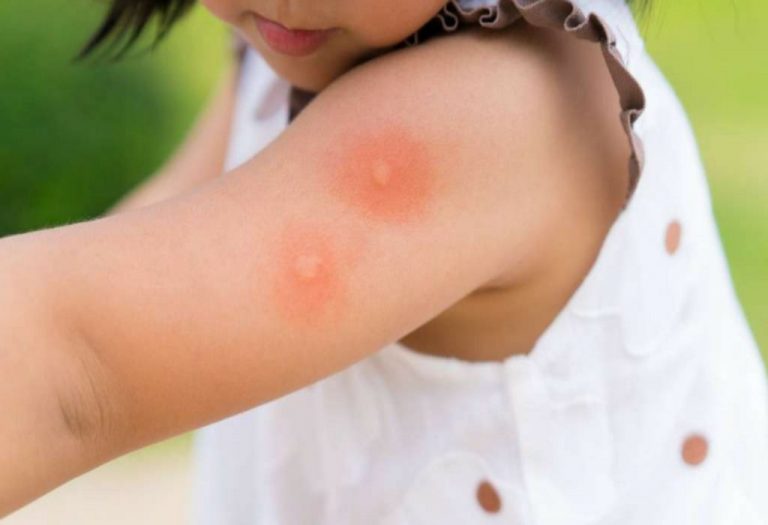Playground Safety for Children – Rules and Precautions
- What Is Playground Safety?
- Why Is Playground Safety Important?
- Playground Safety Rules
- Playground Safety Precautions
- Must-Know Facts About Playground Safety for Children
- FAQs
Well, firstly, there is no denying that ‘playing’, and ‘safety’ may sound quite ironic in general. What would playing be without some scars and bruises and a broken arm or leg, right? But jokes apart, if you want your children to not undergo a serious injury on the playground or, Heaven forbid, any sort of permanent damage ― physical or mental, then playground rules for kids are a must.
What Is Playground Safety?
Precaution is better than cure. We may not be able to forever dodge accidents of all kinds, but the best we can do is to avoid letting them happen. Any kinds of accidents and injuries on the playground can turn out to be a risk when you least expect it. So here’s a list of basic rules and tips for you and your kids to ensure a safe and enjoyable time on the playground.
Why Is Playground Safety Important?
Keeping playgrounds safe is really important to stop kids from getting hurt (1). Kids love to play and explore, but sometimes they can have accidents. Parents can help keep their kids safe by making sure the playground is safe and by watching out for them. This also teaches kids to be careful and learn how to stay safe while having fun.
Playground Safety Rules
Adult supervision and precaution are very important in protecting children from playground hazards. As true as that is, only that wouldn’t be enough to protect your kids all the time. Kids need to be taught and made to naturally take care of themselves and those around them while playing outside. Playground safety for kids ensures a long way in securing their physical and emotional well-being. Below are detailed and easy-to-understand and follow rules for the playground:
1. General Thumb-Rule for Yourself
- Inform your parents or guardians before going to a playground. Have an adult or some friends accompany you, and avoid going alone without informing anyone.
- Check the safety of the ground surface around the play equipment. Make sure there is cushioning to minimise harm if you fall. If you find any possibly dangerous objects, either carefully throw them away or ask an adult to do so. If this is risky, simply avoid playing in that area until it is clean and safe to play.
- Always try to land on your feet by bending your knees when you jump. Do not land on the ground on your knees.
- Avoid playing on wet equipment as this will make it slippery, and you may have more chances of getting hurt.
- Also, believe me, you don’t want to have skin burns. So, if you’re out to play in the sun, apply sunscreen before heading out. If the equipment is too hot, don’t play on it. Maybe evening would be a good time to compensate.
- To ensure playground health and safety, keep your shoelaces properly tied, so you don’t trip and fall. Try to wear as simple and comfortable clothes as you can, without any scarves, drawstrings, cords or loose ends that could get stuck or trapped in any equipment.
- Always check for your belongings before leaving the playground. Pick up your things and don’t leave them behind.
2. Safety Rules Involving Others
- Do not get involved in violent fights or verbal or physical abuse. Never push other kids, and be careful that you are not causing anybody harm.
- If more kids want to play with the same equipment, be patient and wait for your turn. You can organise forming a line, so everybody gets their fair chance.
- Keep your bikes, cycles, bags, or any big stuff away from the play area as someone can stumble over it and get hurt. But keep your food and water nearby yet away from the play equipment in case you need it.
- It is good to play with other kids and make friends, but inform your parents or guardian if an adult stranger approaches you or asks you to do something.
3. Small Equipment Safety Rules
- If you are playing with a ball or a frisbee, and it goes out of the playground, seek help from a grown-up in retrieving it.
- When playing with hoops, ropes and such small equipment, keep yourself away from the big equipment and play areas for older kids.
- Make sure the equipment you play with does not have sharp edges or splinters.
- While playing with a skipping rope, make sure your shoelaces are properly tied and do not wear scarves or any piece of clothing that can come in the way and cause you to fall.
4. Safety Measures of the Big Swing
- Do not go very near to the swing and keep a safe distance if someone is swinging.
- Hold on to the suspending chains with both hands.
- Do not swing too high.
- It is also dangerous to stand or kneel on the swing.
- It is very unsafe to jump off a moving swing. If you want to get off it, first slowly bring it to a halt.
- If you cannot start swinging by yourself, ask your parent or an adult to gently give you a push.
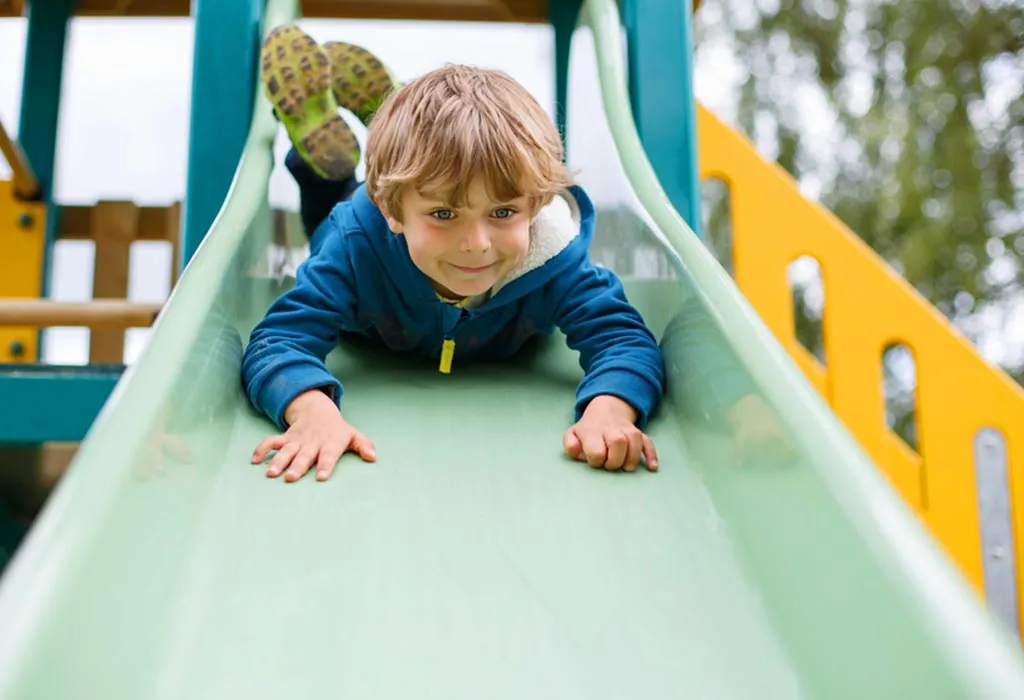
5. Slide Safety
- While climbing the slide ladder, hold the handrail and step carefully one at a time. Don’t try to skip the steps, or you may get hurt.
- Be a good kid in a queue and let the one ahead of you slide down before you go. Don’t push other kids. Give them enough room.
- One important safety tip for slides is to make sure no one is present at the end of the slide, or you might kick or fall over them (2).
- After you slide, get away from the front end quickly if there are other kids in the queue behind you.
- Again, if the slide is too hot, don’t play on it.
6. School Playground Safety
- Kids’ safety tips in the playground at their schools include playing under the supervision of a teacher.
- While playing, understand and follow any instructions your teacher gives regarding equipment.
- If you are playing in groups in a designated area, do not leave that area without the teacher’s permission.
- Keep your water bottle and food away from the play area but within close reach.
- Don’t rush and run while leaving the playground. Form lines and retreat safely.
7. Seesaw Safety Tips
- This comes among the top of preschool playground rules. The spring-type seesaw is recommended for preschoolers.
- Choose to pair up with a kid about your own health, and only one child should sit in a single seat.
- Sit facing each other, not facing outside.
- Keep a straight back and hold the holders with both hands so you are balanced before you start playing.
- Maintain coordination with your partner and keep your feet to the sides, away from underneath the seat.
- Don’t try to climb into the middle of the see-saw, especially a moving one.
8. Safety Rules for Climbing Apparatus
- If the climbing apparatus of any kind is already crowded, wait for a while until there is enough free space.
- Use both hands while climbing and do not take the next step up unless you are balanced in your present position.
- Keep distance from the person in front of you and give them enough leg space so you don’t get a swinging leg.
- Never reach for bars and ropes too far or out of your reach.
- While climbing down, be careful not to hit others and make your way down slowly.
9. Fireman’s Pole Safety Rules
- Hold the pole with both hands and wrap your legs around it as you slide down the pole.
- Before sliding down, always ensure that there is nobody at the bottom of the pole.
- While sliding down, don’t make too much direct and extreme skin contact with the pole, apart from your hands and feet. Let your body slide down light and easily.
- Bend your knees slightly and land on your feet on the ground.
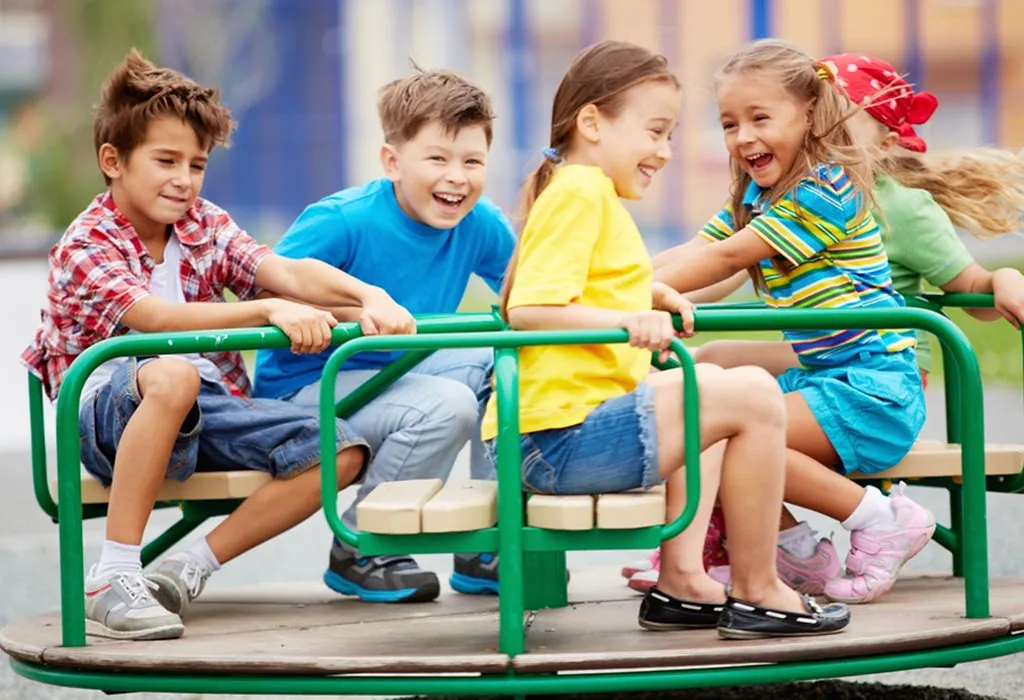
10. Merry-Go-Round Safety Tips
- Merry-go-rounds are safer for kids aged 4 years and above. Younger children tend to fall off them more often.
- Never have the rotation speed of the merry-go-round too fast and out-of-control, neither before nor after you get on it.
- If you are old enough to operate the merry-go-round, bring it to spin and climb on to it, the most important thing is your hand grip strength and balance. Once you’re on it safely, keep holding on to the bars tightly and enjoy the thrill.
- If there are any pinch zones on the equipment, make sure your feet are away from them. Don’t put your feet down, or you might have them scrapped.
- If you start feeling dizzy, ask someone to bring the merry-go-round to a halt. Don’t try to jump off it while it is spinning.
Playground Safety Precautions
Here are some playground safety precautions to consider.
1. Precautions Before the Playing Begins
- Use sunscreen on your kids to protect them from sunburns. Also, use mosquito repellent if required.
- If you are accompanying your child, try to bring a basic first aid kit, glucose water, and some snacks.
- It is always better to make the proper sized and gripped shoes with tightly tied laces. Avoid taking them to playgrounds wearing slippers or flip-flops.
- Make it a habit for them to wear the simplest and most comfortable clothes when going out to play. And try not to worry about soiled clothes.
2. Supervision on the Playground
- Kids should play on equipment meant for their age. Keep younger kids away from play equipment meant for older kids and vice versa.
- Other important playground safety tips include adult supervision for surfaces and faulty equipment.
- Check for any rusted metal equipment or any screws, bolts sticking out or splintered wood equipment.
- Keep a watch on them while they run, jump, play or fight.
3. Choosing Appropriate Play Area for the Kids
- Depending on the age of your child, choose the right play equipment for them. There are mostly separate designated play areas for toddlers and older kids.
- Try to find the safest spots in terms of even and cushioned surfaces, if your kids are learning to walk.
- The bucket or baby swings are safest for young children aged above 1 year.
- Don’t let small kids play on the big slides as it can be dangerous.
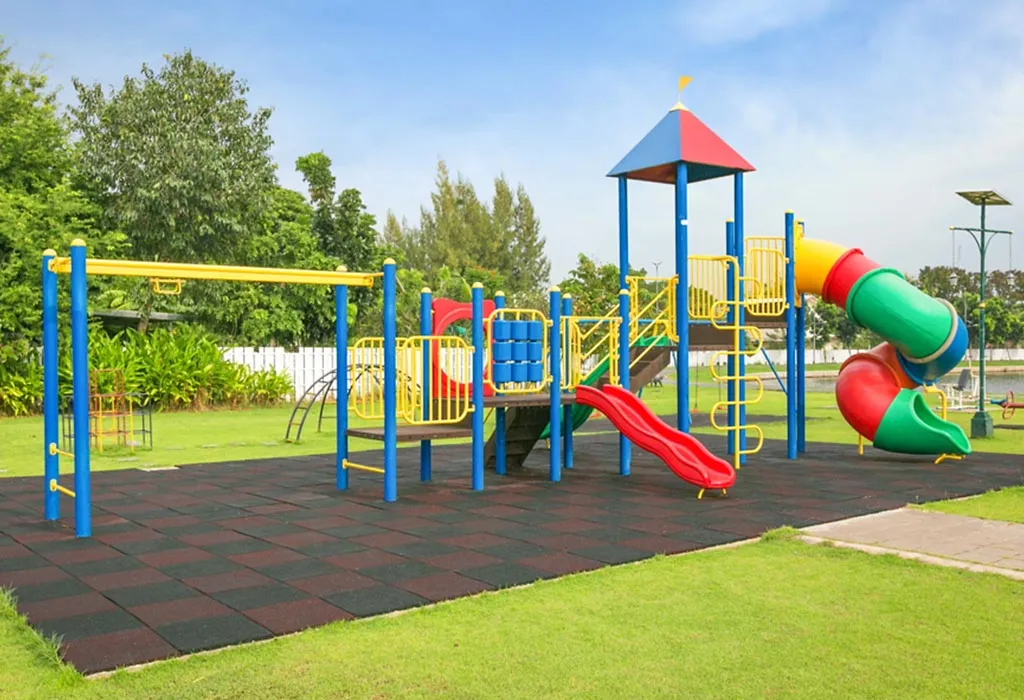
4. Safe Surfaces for Playing
- Ground cushioning is very important and should be shock absorbent.
- According to the American Academy of Pediatrics, instead of surfaces like asphalt, gravel, concrete or dirt, impact-absorbing surfaces made of shredded rubber, wood chips, and sand and levelled surfaces like mats and smooth grounds are much safer for the kids (3).
- Surfaces should be free of trash or dangerous materials like broken glass or twisted metal.
- The sand should not be infested with bugs.
- The surfacing should extend to at least six feet in all directions. For swings, it should be double the height of the swings in length.
- Any loose-fill surface materials should be 12 inches deep for up to 8 feet high apparatus and should not be packed down.
5. Ensure Maintenance and Examination of the Playgrounds
- Inform the concerned authorities if the playground equipment is ill-maintained.
- If you find any serious risks such as harmful litter, rusted or broken equipment, pests and other dangers, report to an authorized body.
- Arrange for regular maintenance and examination of the playground by an authorized person.
Must-Know Facts About Playground Safety for Children
- Playground injuries contribute to more than 200,000 children receiving emergency medical treatment in hospitals every year.
- Severe playground injuries include fractures, dislocations, internal injuries and concussions. About 56% of playground injuries are fractures and abrasions.
- 70% of the injuries to kids happen on public playgrounds.
- 45% of playground injuries occur due to improper supervision.
- More than 75% of the total playground injuries have resulted due to falls.
- The most number of injuries are caused by swings to kids up to 4 years old.
- Four-year-olds are the victims of the most traumatic brain injuries.
- Nearly 70% of play-related deaths happen on home playgrounds.
- Statistics show that boys are more frequently injured than girls.
- The highest rate of injuries is found in children aged 5-9 years.
- Most injuries occur due to Monkey bars, climbing apparatus and swings.
FAQs
1. Should teachers always be present while kids play on the ground?
For the general safety of children in their formative school years, teachers should always supervise the children in the playground to avoid any accidents since they don’t know much about the safety rules of the playground and can accidentally hurt themselves. Similarly, at home, parents should supervise the children (1).
2. What if my child is bullied by another child in the playground?
If you notice your child being bullied by another child, immediately stop the tussle and, as a calm and patient person, try to resolve the issue by guiding both parties. Teach the bully that teasing other children is a bad practice and teach the child who is being bullied to take a stand for themselves and be more courageous.
3. What if my child gets injured while playing on the ground?
First and foremost, give first aid to your child. If your little one is injured by their own mistake, then you can take them directly to the doctor to check for any internal injuries. If the injury happened because of any malfunction of slides or in the ground, take a photograph of the issue and report the incident to the committee responsible for the care of the playground to prevent such incidents again.
Parents can make their children learn, enjoy and develop their motor and vestibular skills on the playground by adopting some safety precautions for the kids. Also, teaching the kids about responsible behaviour on playgrounds makes them less likely to get hurt.
References/Resources:
1. Playground Safety; Nemours KidsHealth; https://kidshealth.org/en/parents/playground.html
2. Playground Safety Guide; American Academy of Orthopaedic Surgeons; https://orthoinfo.aaos.org/en/staying-healthy/playground-safety-guide/
3. Playground Safety; American Academy of Pediatrics; https://www.healthychildren.org/English/safety-prevention/at-play/Pages/Safety-on-the-Playground.aspx
Also Read:
Road Safety Rules for Kids
Fire Safety Tips for Children
Safety Rules at School for Kids
Good Habits Parents Should Teach Their Kids
Was This Article Helpful?
Parenting is a huge responsibility, for you as a caregiver, but also for us as a parenting content platform. We understand that and take our responsibility of creating credible content seriously. FirstCry Parenting articles are written and published only after extensive research using factually sound references to deliver quality content that is accurate, validated by experts, and completely reliable. To understand how we go about creating content that is credible, read our editorial policy here.






